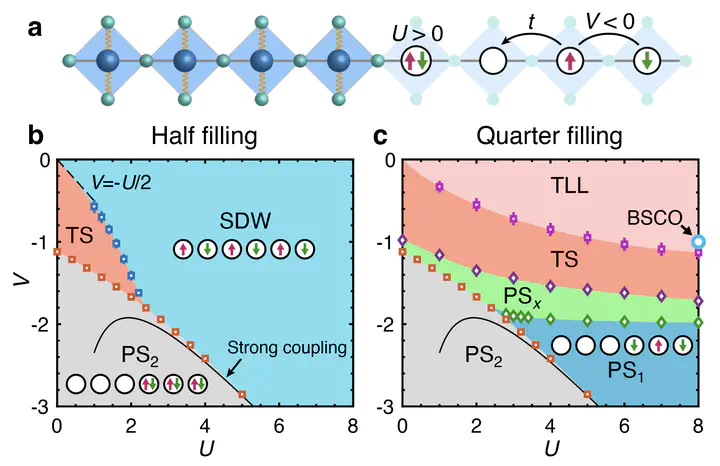Spin-triplet pairing induced by near-neighbor attraction in the extended Hubbard model for cuprate chain

Abstract
In quantum materials, the electronic interaction and the electron-phonon coupling are, in general, two essential ingredients, the combined impact of which may drive exotic phases. Recently, an anomalously strong electron-electron attraction, likely mediated by phonons, has been proposed in one-dimensional copper-oxide chain Ba2−xSrxCuO3+δ. Yet, it is unclear how this strong near-neighbor attraction V influences the superconductivity pairing in the system. Here we perform accurate many-body calculations to study the extended Hubbard model with on-site Coulomb repulsion U > 0 and near-neighbor attraction V < 0 that could well describe the cuprate chain and likely other similar transition-metal materials with both strong correlations and lattice effects. We find a rich quantum phase diagram containing an intriguing Tomonaga-Luttinger liquid phase —besides the spin density wave and various phase separation phases —that can host dominant spin-triplet pairing correlations and divergent superconductive susceptibility. Upon doping, the spin-triplet superconducting regime can be further broadened, offering a feasible mechanism to realize p-wave superconductivity in realistic cuprate chains.